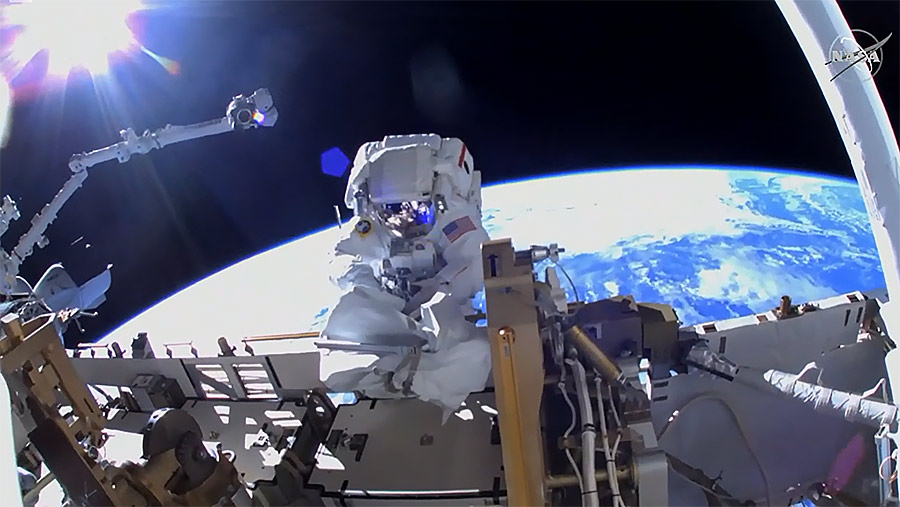Next Crew Launch Set for Friday Following Tuesday’s Spacewalk

The International Space Station is set to welcome three new crewmates who are set to launch on Friday and arrive just over three hours later. In the meantime, the seven-member Expedition 66 crew turned its attention to science duties following Tuesday’s successful spacewalk.
The next crew ship to launch toward the orbiting lab has rolled out and now stands at the Baikonur Cosmodrome launch pad in Kazakhstan. The Soyuz MS-21 spacecraft is counting down to lift off on Friday at 11:55 a.m. EDT. It will carry three cosmonauts on a three-hour and 10-minute ride to the station where it will dock to the Prichal module. Veteran cosmonaut Oleg Artemyev, with first-time station visitors Denis Matveev and Sergey Korsakov, will open the hatch about an two-and-a-half hours later and begin a six-and-a-half-month mission aboard the space station. NASA TV, on the app and the website, will begin its live launch coverage at 11:15 a.m. on Friday.
Two NASA astronauts, Kayla Barron and Raja Chari, had a light schedule on Wednesday following Tuesday’s six-hour and 54-minute spacewalk to set up the station for its next roll-out solar array. The pair started the day with standard post-spacewalk medical exams looking at their hands, ears, blood pressure, and temperature. Barron then worked late in the afternoon in the Kibo laboratory module setting up the Confocal Microscope that looks at biological samples using spatial filtering techniques. Chari wrapped up his day charging the U.S. spacesuit’s lithium-ion batteries.
Flight Engineers Tom Marshburn of NASA and Matthias Maurer of ESA (European Space Agency) teamed up for a muscle study taking place in the Columbus laboratory module on Wednesday. The astronauts took turns measuring each other’s neck, back, and leg muscles to learn how microgravity affects their biochemical properties. NASA astronaut Mark Vande Hei serviced microbe samples growing inside a specialized incubator for the Space Biofilms study that could improve spacecraft safety and crew health.
In the station’s Russian segment, two cosmonauts, Commander Anton Shkaplerov and Flight Engineer Pyotr Dubrov, packed gear and prepared for their return to Earth on March 30. Shkaplerov will lead the ride home flanked by Dubrov and Vande Hei inside the Soyuz MS-19 crew ship. Vande Hei surpassed NASA astronaut Scott Kelly’s single spaceflight record of 340 days on March 15 and will land in Kazakhstan with a NASA record-breaking 355 days in space.
Mark Garcia
Powered by WPeMatico







